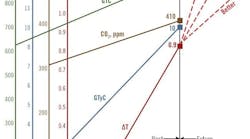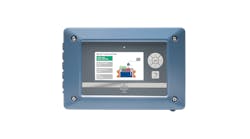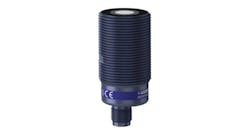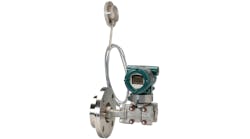This column is moderated by Béla Lipták, automation and safety consultant and editor of the Instrument and Automation Engineers' Handbook (IAEH). If you have an automation-related question for this column, write to [email protected].
We've experienced unreliable readings of rod positions, and when alarm conditions caused the machine to stop, no wear been found on the rider ring. This has occurred many times. Please suggest what could be causing the false readings.
Bhartendu Nayak
[email protected]
A: You mentioned rod drop sensor and XY. For clear understanding, please send me the P&ID or general arrangement, so I can understand exact positions.
Further, when you checked linearity and factor using a wobulator, did you also use target material that was the same as that of the shaft? A wobulator has typical target material which must be replaced by materials that are similar to that of the shaft.
Also, did you check the 3500 rack configuration software to ensure the probe factor is the same as you calculated via the wobulator?
Debasis Guha
[email protected]
[The specialized nature of proximity probe measurements requires a specialized calibration instrument, capable of introducing fixed gap (i.e., position), changing gap (i.e., vibration), and rotative speed signals into the transducer for verification and testing purposes. One example is the Bently Nevada TK-3, where a fixed gap is provided by clamping the probe into a stationery position, while a movable target on a spindle micrometer is adjusted. Simulated vibration is provided by clamping the probe into a movable swing arm, observing a precision-machined wobble plate that rotates, and introducing a known amount of changing gap with each rotation. Finally, shaft rotative speed is simulated by observing a notch on the side of the rotating wobble plate.
TK-3 wobulator provides all of these functions in a portable kit that allows users to test and verify the entire measurement path, from the tip of the probe all the way through to the monitor’s visual indicators, relay contacts, and digital/analog interfaces.–Ed.]
Q: In your column, "Is global warming like level control?" you explained that global temperature will continue to rise even after we cut back on our carbon emission. You compared this process to that of a tank of water, in which the level will contonue to rise even if we start filling it slower. That logic makes good sense, but you did not give numbers on when will our "tank" (the carbon concentration in the atmosphere) will get to the level set as a limit by the Paris Agreement—how much time do we have to make this "control loop" function?
Z. Friedmann
[email protected]
A: Excellent question. To answer it, I prepared Figure 1, in which the values of the four key variables of this process are shown over about a century. I simplified the plot by substituting straight lines for the nonlinear curves and distinguished them by color. Green is the weight in gigatons of the accumulated carbon in the atmosphere (GTC), brown is the CO2 concentration in the air in parts per million (CO2 ppm), blue is the weight in gigatons of the yearly emitted carbon(DTyC), and red is the total rise of global temperature in °C. At the top, I've shown the temperature rise limit set by the Paris Agreement (1.5 °C).
Figure 1: Global CO2 emissions (blue line) are currently accelerating, which if continued, will cause global warming to reach the Paris Agreement limit of 1.5 °C as early as 2040.
The CO2 concentration, the temperature rise, the carbon content of the atmosphere and the yearly emission are all rising and it is expected that the Paris-Katowice limit will be exceeded sooner than 2040. (∆T(°C) = Temperature rise[1], GTyC = Giga-Ton per year of Carbon emission, GTC = Giga-Ton of Carbon in the atmosphere, CO2 ppm = carbon dioxide concentration in the atmosphere).
[1] The value of the temperature rise depends on how the reference line is selected? If we consider the reference to be the average temperature between 1880 and 1889, in that case (according to the NASA report, published in the New York Times on 2019 February 7, the rise in global temperature (∆T) in 2016 reached 1.2 °C and in 2018 it was around 1.1°C.
As you can see in the figure, the planet is warming very slowly (1 °C to 2 °C per century). This might be suprising with such a great heat input from the sun, which equals the heat content of four Hiroshima bombs per second. The reason is the trumendous cooling capacity of the oceans and ice caps at the poles. As to the amount of ice, Antarctica alone is larger than the U.S. and is covered by a 7,000-foot-thick mountain of ice, which is the height of six Empire State buildings. Imagine what happens to the ocean levels when all that ice has melted.
Now, when process control engineers look at this process and are told to return it to preindustrial conditions, they would configure a control loop to do it. The setpoint of the loop is a 0.0 °C temperature rise (which corresponds to a CO2 concentration of 300 ppm), and the manipulated variable is the CO2 emission rate (flow into the atmosphere) because that flow causes the heating. So, we have a temperature control loop that's throttling (reducing) the emission flow. This flow today is 10 GTyC per year—in other words, about 1.5 tons of carbon (about 5 tons of CO2 per year) is sent into the atmosphere per person on our planet. But we have two problems that need to be answered before this loop will function:
- What do we manipulate to lower the flow of emission?
- How do we remove the excess CO2 (880 - 580 = 300 GTC) that's alseady accumulated during the past century?
Answering these questions is not easy. I'm in the process of writing a book on this very subject, which will be published later this year by ISA.
In answering the first question, we see on the figure that if our emission rate rises at about the same rate as it does today, we'll reach and exceed the limit set by the Paris Agreement by 2050-60. Naturally, if the rate rises, we'll reach the Paris limit sooner. As of today, that is the case, as global emission increased by 3.4% last year compared to 2017. If that continues, the Paris limit will be reached by around 2040 (with the consequence we all know).
So, how do we go about throttling the yearly emission? The answer is obvious: by making it profitable to do. And how do we make it profitable? By taxing the use of fossil energy and investing the collected tax into subsidizing the development of green energy use.
Solving the other problem (removing the accumulated 300 GTC of carbon from the air) is more difficult and it will take many pages in my forthcoming book to cover it. Here, I will just say that we have two options: Option A is to do nothing, which will result in continued rising of the global temperature and will bring the known consequences, or Option B, which is to develop new technologies. Some of my ideas have already published in Control in connection with the reversible fuel cell (RFC), which you can also learn about by listening to: http://techchannel.att.com/play-video.cfm/2011/8/25/Science-&-Technology-Author-Series-Bela-G-Liptak:-Post-Oil-Energy-Technology.
Béla Lipták
[email protected]

Leaders relevant to this article:




